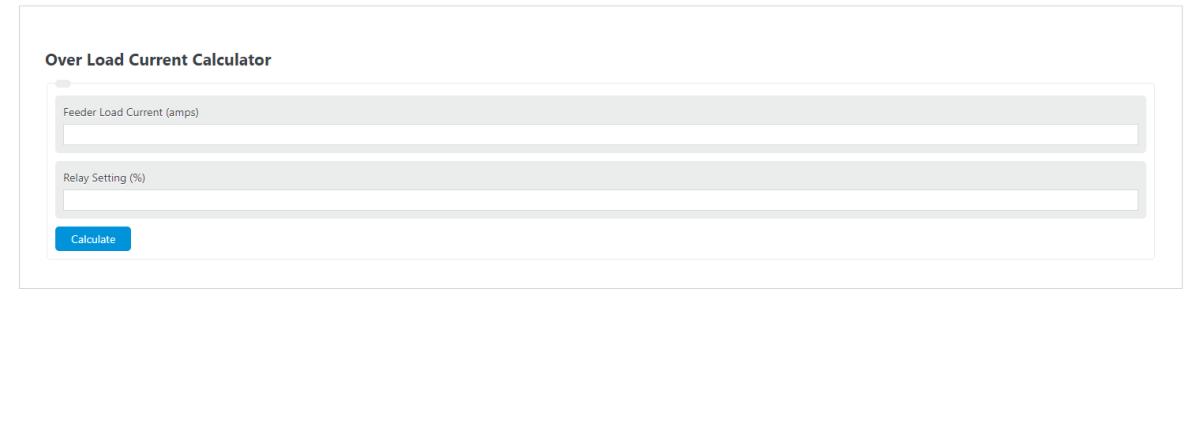Enter the feed load current and the relay setting into the calculator to determine the over load current.
- Armature Current Calculator
- LED Inrush Current Calculator
- Leakage Current Calculator
- Fault Current Calculator
- Voltage Regulation Calculator
- Over Current Relay Setting Calculator
Over Load Current Formula
The following equation is used to calculate the Over Load Current.
OLC = FLC * RS/100
- Where OLC is the overload current (amps)
- FLC is the feeder load current (amps)
- RS is the relay setting (%)
To calculate the overload current, multiply the feeder load current by the relay setting.
What is an Over Load Current?
Definition:
An overload current is a measure of the excess current relative to normal operating conditions.
How to Calculate OverLoad Current?
Example Problem:
The following example outlines the steps and information needed to calculate Over Load Current.
First, determine the feeder load current. In this example, the feeder current is measured as 200 amps.
Next, determine the relay setting. The relay setting, in this case, is 130%.
Finally, calculate the over load current using the formula above:
OLC = FLC * RS/100
OLC = 200* 130/100
OLC = 260 amps
FAQ
What is the significance of calculating overload current in electrical systems?
Calculating overload current is crucial for designing and protecting electrical systems. It helps in selecting the appropriate size of circuit breakers, fuses, and other protective devices to prevent damage to equipment and ensure safety from fire hazards caused by excessive current.
How does the relay setting affect the calculation of overload current?
The relay setting, expressed as a percentage, determines the threshold at which the relay will trip to protect the circuit from overload conditions. A higher relay setting allows for a higher load current before tripping, which can be useful in applications with high start-up currents but might increase the risk of damage under prolonged overload conditions.
Can overload current calculations be applied to all types of electrical circuits?
Yes, overload current calculations can be applied to various types of electrical circuits, including residential, commercial, and industrial systems. However, the specific parameters and considerations may vary depending on the circuit’s complexity, the nature of the load, and the regulatory standards applicable to the installation.
